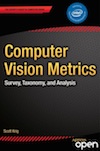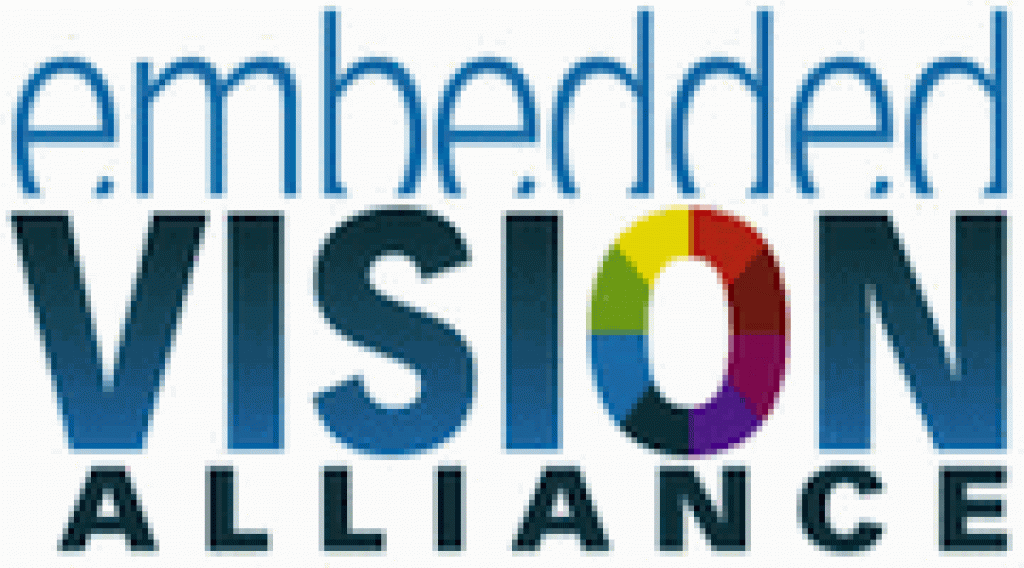|
Dear Colleague,
Last time, I told you about the presentations at next month's Embedded Vision Summit on convolutional neural networks (CNNs), an increasingly popular means of extracting meaning from images. This time, I'd like to highlight Summit events focused on another important topic: industry standardization.
Industry standards are critical to enabling adoption of any new technology. With respect to embedded vision, I'm talking specifically about APIs (application programming interfaces) and algorithm libraries. For example, Khronos' new OpenVX standard enables cross-platform acceleration of computer vision algorithms. Khronos' OpenCL framework is often used for writing computer vision programs that execute on heterogeneous processing platforms. And the popular open-source OpenCV library of computer vision functions, while not a formal standard, is a de facto standard for many developers.
All of these subjects will be showcased at the Embedded Vision Summit:
-
Gary Bradski, head of the OpenCV Foundation and one of the most recognizable names in computer vision, will present "The OpenCV Open Source Computer Vision Library: Latest Developments." Bradski will provide an insider's perspective on the new OpenCV 3.0 and how developers can utilize it to maximum advantage for vision research, prototyping, and product development.
-
Deshanand Singh, Director of Software Engineering at Altera, will discuss "Efficient Implementation of Convolutional Neural Networks using OpenCL on FPGAs." Singh will give a detailed explanation of how CNN algorithms can be expressed in OpenCL and compiled directly to FPGA hardware.
-
Mostafa Hagog, Architect at Intel, will talk about "Developing High-Performance, Energy-Efficient Vision Solutions Using Open-Standard Libraries and APIs." Using real-world examples, Hagog will explore how open standard libraries and APIs can speed application development while often also improving performance and energy efficiency.
-
Yury Gorbachev, Principal Engineer at itseez, will speak about "OpenCV for Embedded: Lessons Learned." Gorbachev's talk will address topics such as cross-platform development, performance profiling, benchmarking, and automated regression testing.
-
And Neil Trevett, President of the Khronos Group, will present "Navigating the Vision API Jungle: Which API Should You Use and Why?" Trevett will map the landscape of APIs for vision software development, highlighting where they overlap and complement each other, and will preview some of the latest developments.
In addition, two workshops taking place in conjunction with the Summit cover various industry standards:
-
"Implementing Computer Vision: A Technical Introduction," developed by BDTI in collaboration with the Khronos Group, is a workshop on algorithms, processors, sensors, tools, libraries, and standards for practical computer vision systems and applications. The workshop gives special attention to OpenCV, OpenCL and OpenVX. It takes place on May 11th from 9 AM to 5 PM, and the $299 registration fee includes lunch.
-
Altera's "SDK for OpenCL for Embedded Vision Applications on FPGAs" workshop will explore how the Altera SDK for OpenCL abstracts away the traditional FPGA hardware development flow and provides a software-familiar flow that allows the FPGA to be prototyped in minutes. It runs from 8:30 AM – 12:30 PM on May 13th and registration costs $150.
Head to the Alliance website for in-depth information on these and other technical presentations and workshops, as well as information on the Summit keynotes and the technology showcase. The Embedded Vision Summit, an educational forum for product creators interested in incorporating visual intelligence into electronic systems and software, takes place on May 12, 2015 at the Santa Clara (California) Convention Center; accompanying half- and full-day workshops are offered on May 11 and 13. Last year's Summit sold out, so don't delay, register today!
While you're on the Alliance website, check out all the other great content recently published there, including ADAS demonstrations at January's Consumer Electronics Show from Imagination Technologies and NVIDIA, and the announcements of Altera's and Xilinx's planned demonstrations at the National Association of Broadcasters (NAB) show in Las Vegas, Nevada. And to further enrich your vision expertise, consider attending Alliance founder Jeff Bier's April 23 presentation at the Linley Mobile Conference in Santa Clara, California, as well as the June 8-10 Augmented World Expo (discount code AWE15EVS takes $400 off the all-access conference pass price). Thanks as always for your support of the Embedded Vision Alliance. If you have an idea as to how the Alliance can better service your needs, please contact me.
Brian Dipert
Editor-In-Chief, Embedded Vision Alliance
|
|
"An Update on OpenVX and Other Vision-Related Standards," A Presentation from Khronos
Elif Albuz, Manager of Vision Software at NVIDIA, delivers the presentation "Update on OpenVX and Other Khronos Standards" at the December 2014 Embedded Vision Alliance Member Meeting. Elif provides an update on the newly released OpenVX standard and other vision-related standards in progress.
Tend Demonstrations of Surveillance for Consumers
Jamie MacBain, Director of Licensed Product Development at Seedonk (now Tend), demonstrates the company's latest embedded vision technologies and products at the January 2015 Consumer Electronics Show. Specifically, MacBain demonstrates surveillance applications for home and other consumer opportunities, enabled by the company's software-as-a-service technologies.
More Videos
|
|
Computer Vision Metrics: Survey, Taxonomy, and Analysis
The Embedded Vision Alliance is pleased to provide you with a free electronic copy of this in-depth technical resource, with book chapters available on the Alliance website in both HTML and PDF formats. Computer Vision Metrics provides an extensive survey and analysis of over 100 current and historical feature description and machine vision methods, with a detailed taxonomy for local, regional and global features. The book provides the necessary background to develop intuition about why interest point detectors and feature descriptors actually work, as well as how they are designed, along with observations about tuning the methods for achieving robustness and invariance targets for specific applications. Also see the Alliance's interview with author Scott Krig, as well as Krig's presentation at a recent Alliance Member Meeting. More
Security System Integration Market Worth An Estimated $59.5 Billion
The world market for security system integration was valued at $59.5 billion in 2013, an increase of almost $5 billion from 2012, according to a new report from IHS. The security system integration market consists of the design, consultancy, installation, service and maintenance, as well as sales of video surveillance, physical access control and intruder alarm equipment. Revenue is expected to continue growing in excess of 9 percent annually through 2018. More
More Articles
|







